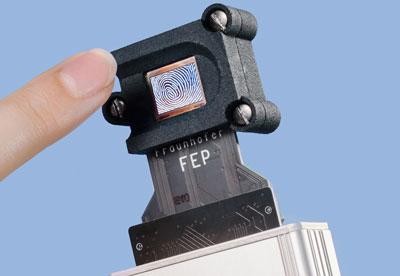Smart antibacterial surfaces using bidirectional display technology
- Details
- Hits: 5843
 The Fraunhofer Institute for Organic Electronics, Electron Beam and Plasma Technology FEP has been involved in the development of processes and systems for cleaning, sterilization and surface modification for decades. As part of an internal funding project, the institute has dealt with a novel approach to the automated detection and inactivation of biofilms and has now presented the first results.
The Fraunhofer Institute for Organic Electronics, Electron Beam and Plasma Technology FEP has been involved in the development of processes and systems for cleaning, sterilization and surface modification for decades. As part of an internal funding project, the institute has dealt with a novel approach to the automated detection and inactivation of biofilms and has now presented the first results.
You can find them everywhere - on the shower curtain, in pipes or at the tap. Biofilms can form on almost any surface, provided the supply of moisture is right. The word biofilm refers to an accumulation of microorganisms in which the bacteria live together in close association within a mucilaginous substance. Since they are very persistent, they represent an unsolved problem in many areas of daily life. Particularly in medicine, the growth of biofilms on implants and catheters presents a high risk of infection. In fact, against pathogens in over 60% of infectious diseases can not be effective because they are protected by the biofilm
So far, there is no method by which biofilms can be effectively prevented or specifically inactivated. The "Biclean" project is now using the example of fingerprint sensors by providing a technical aid for the detection and elimination of biofilms, thus preventing the risk of transmission of pathogenic germs. For this bidirectional displays were coated with titanium dioxide (TiO2) or TiO2-containing layer combinations. The biofilm can thus be inactivated. Bidirectional displays can emit light or content and detect and evaluate the receding light via an integrated camera function.
The bidirectionality makes it possible to detect the condition of the surface by the device itself. Thus, it is possible to detect the formation of biofilms, and then start a cleaning interval depending on the degree of contamination. Another research focus is the cleaning of the surface, which should also be done by light emission from the display. This is to be made possible by the coating technologies for easy-to-clean, so-called "easy-to-clean" surfaces.
"The idea of biofilm control is based on two steps." Gaby Gotzmann, Group Manager for Sanitation, Sterilization and Biofunctionalization, "In the first step, the surface contamination is analyzed by means of a detector function. In the second step, if there is fouling, light emission, and only as needed, triggers a chemical reaction on the surface, which can inactivate biofilms. "
